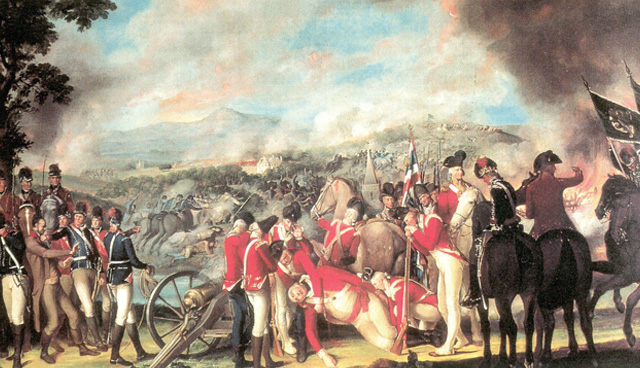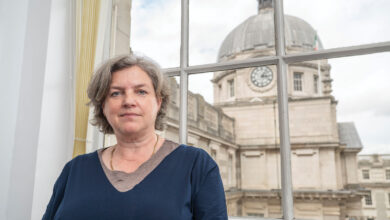Disremembering: Remembering to forget

The contribution of revolutionary Ulster Presbyterians to the Society of United Irishmen and subsequent 1798 Rebellion is an important and often neglected aspect of our recent past. Guy Beiner, a historian from the Ben-Gurion University of the Negev in Israel explores the culture of social forgetting.
The poet W.R. ‘Bertie’ Rodgers, originally a Presbyterian minister, commented in verse on the muted culture of orality in Ulster, where “the word is still a fighting word” and the people “bristle into reticence at the sound of the round gift of the gab in Southern mouths”. Seamus Heaney, though a Catholic, concurred, and, in his aptly-named poem Whatever you say, say nothing, wrote of “Northern reticence, the tight gag of place”, which he decried as a “land of password, handgrip, wink and nod”. Taciturnity cultivated traditions of social forgetting, in which subdued memories of discomfiting events were obscured behind a façade of oblivion.
The term ‘disremembering’ was once commonly used around Antrim and Down as a colloquial reference to forgetting. A Glossary of Ulster Speech, compiled in the early-twentieth century reveals that it also had more subtle meanings and could signify “pretend to forget” and “be unwilling or inclined not to remember”. A telling case of such deceptively ambiguous disremembering can be found in the oblique ways through which Ulster-Scot communities recalled the mass participation of Presbyterians in the United Irish rebellion of 1798.
Inspired by the revolutions in America and France, ‘dissenters’, as they were called at the time, were prominent among the founders of the secret society of the United Irishmen. It was at McArt’s fort on Cave Hill, overlooking Belfast, that Theobald Wolfe Tone, a Dublin Anglican, met with Samuel Neilson, Robert Simms, Henry Joy McCracken and Thomas Russell and together they took an oath “never to desist in our efforts, until we have subverted the authority of England over our country and asserted her independence”.
The northern insurrection that took place over the course of a week in June 1798 was a bloody affair. While the Crown forces secured Belfast in advance, wide-scale violence erupted throughout counties Antrim, Down and adjacent parts of Derry, with significant battles in Antrim town, Saintfield and Ballynahinch.
Yet, in the aftermath of the events, and in particular following the passing of the Act of Union in 1800, Presbyterian communities seemed to realign their political allegiances, moving from radicalism to loyalism, unionism and Orangeism, and were accordingly obliged to repress recollections of their involvement in republican insurgency alongside Catholics.
Samuel McSkimin, a loyalist antiquarian living in Carrickfergus, noted one of several euphemisms through which this historical episode was recalled: “In speaking of this insurrection it is very rarely called a rebellion, but commonly ‘the Turnout’; the call used at the time, to those who appeared tardy to come forth to the ranks.”
When it was no longer expedient to recall former disloyalty, portrayals of reluctant rebels both evoked and masked the memory of the thousands who had ardently rallied to the United Irish cause. Under the surface, memories persevered. At places like the home of Mary Ann McCracken, devoted sister of the executed Henry Joy McCracken, former ‘Croppy’ rebels, such as James ‘Jemmie’ Hope, gathered to memorialise behind closed doors their loved ones. Towards the end of their lives, anxious that their secrets would be buried with them, they shared their reminiscences with the sympathetic historian Richard Robert Madden.
When it was no longer expedient to recall former disloyalty, portrayals of reluctant rebels both evoked and masked the memory of the thousands who had ardently rallied to the United Irish cause.
Traditions of covert remembrance were passed on to subsequent generations, to be collected by such enthusiasts as the fin de siècle Belfast antiquarian Francis Joseph Bigger, who wrote biographies of the northern leaders of the United Irishmen which remained unpublished. In 1885, the Newtownards journalist W. G. Lyttle serialised in the North Down Herald his ‘tale of ’98’ Betsy Gray; or, Hearts of Down, which was largely based on local folk history. Repeatedly republished, it became a regional best-seller and, according to the former curator of Ulster Folk Museum Aiken McClelland, “was a standard book in almost every County Down home”.
Impassioned readers were so taken by the romanticised account of how ruthless yeomen killed the heroine Betsy Gray, who fled the battlefield of Ballynahinch alongside her brother and lover, that a subscription was undertaken to fundraise for a monument in advance of the centennial year.
However, in Ulster’s volatile sectarian politics, the centenary of Ninety-Eight proved to be an extremely controversial event. Commemoration of the United Irishmen by nationalist Catholics was opposed by unionist Protestants, resulting in violent riots and the introduction of martial law in Belfast. The recently-erected memorial to Betsy Gray outside Ballynahinch was smashed to pieces by an Orange crowd in protest of it being visited by Belfast nationalists, who arrived by train on Sundays – in violation of the Sabbath – and brazenly “decorated the grave with seditious emblems and mottoes”.
Rather than disowning memory, this was in effect a zealous competition over the possession of memory. Seventy years later, a local eye-witness recalled how “they didn’t like those people claiming Betsy”.
In a culture of social forgetting, the breaking of taboos, whereby embarrassing events are not spoken about openly in public, can provoke violent responses. Commemoration was often met with decommemoration. When the bones of the local hero Roddy McCorley were supposedly discovered in Toome in 1859, Orangemen objected to their reinternment in the nearby graveyard. A graveside memorial erected by Francis Joseph Bigger in 1909 was smashed, repaired and broken again. A Celtic cross monument to McCorley, unveiled in Toome in 1954, was destroyed in January 1969, on the eve of the Troubles. In 1971, the Celtic cross tombstone in Mallusk of Bigger, recognised as a Protestant dedicated to memorialising the United Irishmen, was targeted by explosives.
Against the backdrop of the breakthrough in the peace process and the signing of the Good Friday Agreement, the bicentenary of the 1798 rebellion was widely commemorated by Presbyterian communities, in what seemed to promise an end to a long history of disremembering. But the culture of social forgetting proves to be tenacious. In subsequent years, acts of remembrance have sparked occasional reactions of decommemoration, as in the 2012 rioting in Belfast in opposition to a dissident republican parade to commemorate Henry Joy McCracken. In another display of iconoclasm, a blue plaque erected at the graveyard in Mallusk in memory of Jemmy Hope was smashed shortly after it was unveiled in 2014.
While the case of disremembering ‘the Turnout’ in Ulster may seem unique, social forgetting is more prevalent than meets the eye and, with a bit of digging, can be found in many other instances throughout Ireland, both north and south. As the recent furore in the Republic over an initiative to commemorate the dead of the Royal Irish Constabulary revealed, even during a decade of commemorations there are hidden histories of disremembering waiting to be uncovered when dealing with the troubled past.
Guy Beiner is professor of modern history in Ben-Gurion University of the Negev in Israel and the visiting Burns Scholar in Irish Studies at Boston College. His book Forgetful Remembrance: Social Forgetting and Vernacular Historiography of a Rebellion in Ulster (Oxford University Press) has won multiple awards.





